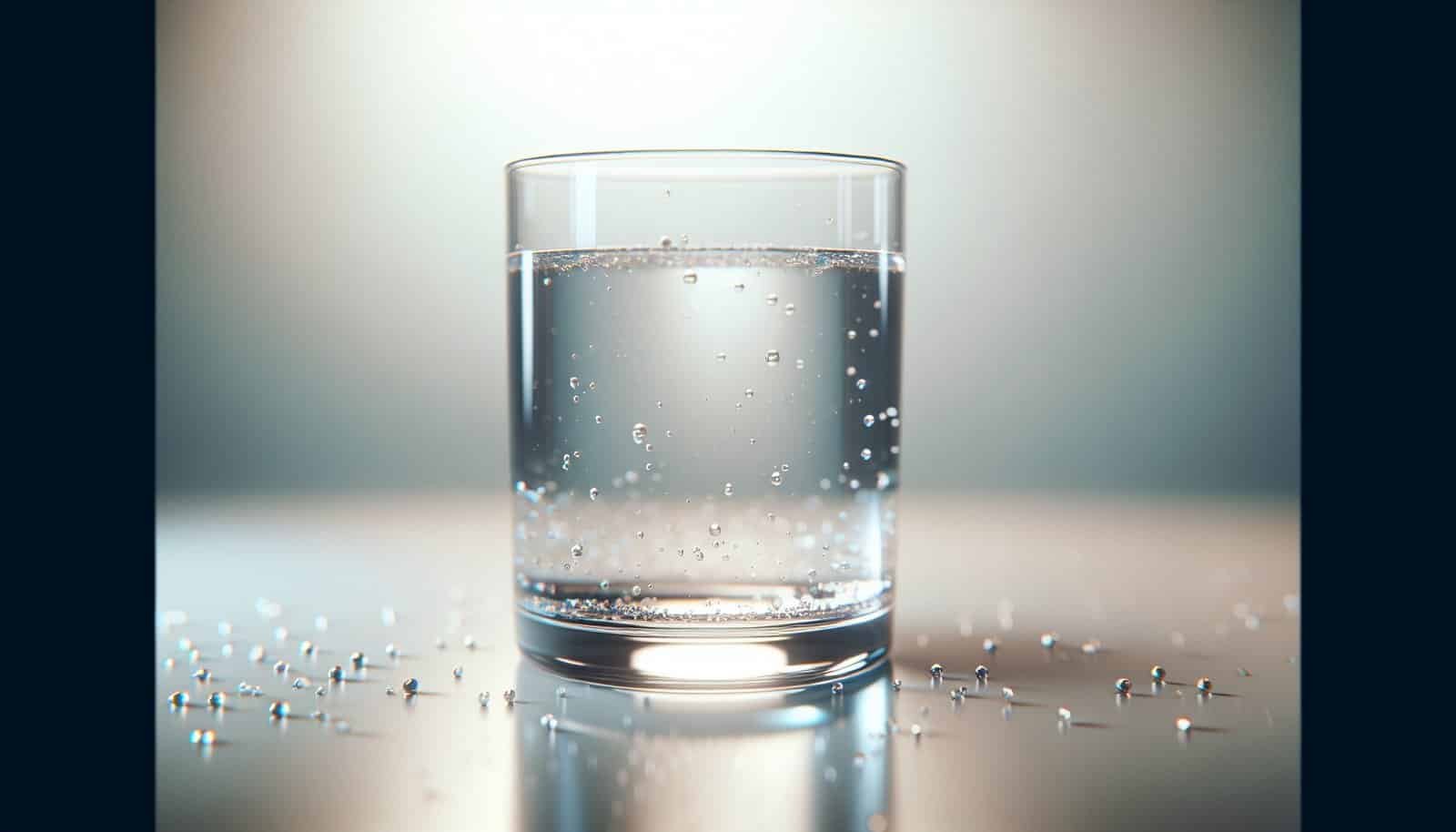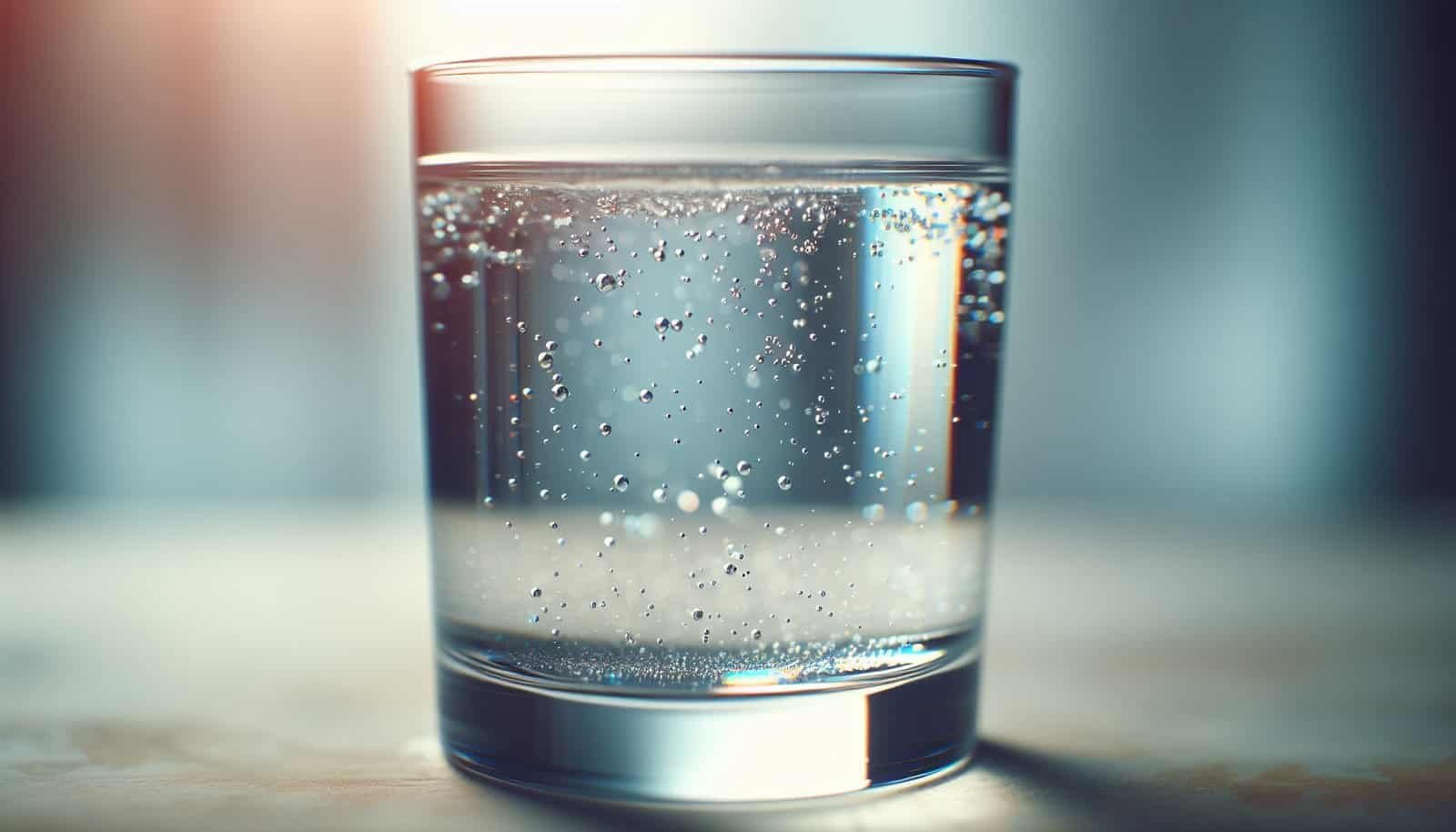?Are you unsure which contaminants to test for in your well water and how to handle nitrates if they show up?

Why testing your well water matters
You rely on your well for drinking, cooking, bathing, and watering your garden. Because private wells are not regulated by the EPA, you are responsible for ensuring the water is safe. Regular testing helps you spot contaminants that can harm health, corrode plumbing, or cause unpleasant tastes and odors. Testing also guides the right treatment choices when problems appear.
How often should you test your well?
Testing frequency depends on the contaminant, local risk factors, and changes in your well or environment. Below is a practical guideline to help you plan regular testing.
- Test for bacteria (total coliform and E. coli): at least once per year and after repairs, flooding, or any change in taste/odor/color.
- Test for nitrates: at least once per year and more often if you live near agricultural areas, septic systems, or experience changes.
- Test for arsenic, uranium, radon, and other naturally occurring contaminants: initially, and every 3–5 years thereafter unless local geology suggests more frequent checks.
- Test for VOCs, pesticides, or fuel-related contaminants: whenever there is potential contamination (near spill sites, underground tanks, heavy pesticide use) and after any suspected contamination event.
- Test for metals (lead, copper): after plumbing changes, new appliances, or if you have older pipes; test annually if you have a private or aging distribution system.
- Test for aesthetic parameters (iron, manganese, hardness, pH): when you notice staining, scaling, or taste/odor issues, or at least every few years.
How to get accurate test results
You want reliable analysis. Follow these steps to ensure accurate sampling and results.
- Contact a state-certified laboratory to obtain appropriate sample bottles and instructions.
- Use only the bottle provided for the test — some tests require preservatives.
- Collect samples from a cold, running tap after letting water run a specified amount of time (follow lab instructions).
- Avoid collecting from a tap with a filter or softener unless you are testing that treated water; usually you’ll sample untreated well water.
- Keep samples cool and deliver them to the lab within the time frame the lab requires.
- Ask the lab which tests are included in common well-water panels and which additional tests you should consider based on local conditions.
Which contaminants should you test for?
There’s a long list of possible contaminants. Below is a clear table to help you decide what to test for, why it matters, common sources, and typical testing frequency.
| Contaminant | Why test | Common sources | Recommended frequency |
|---|---|---|---|
| Total coliform & E. coli | Indicates fecal contamination and risk of pathogens | Septic systems, surface water intrusion, wildlife | Annually and after repairs/flooding |
| Nitrate (NO3-) / Nitrite (NO2-) | Health risk for infants and pregnant people; indicates contamination | Fertilizers, septic systems, animal waste, manure storage | Annually and if land use changes |
| Arsenic | Long-term cancer risk and other chronic effects | Natural geologic sources, some industrial inputs | Initially and every 3–5 years |
| Lead | Neurological effects, especially in children | Corrosion of plumbing, lead solder | After plumbing changes and periodically if plumbing is older |
| Copper | Aesthetic and health issues at high levels | Corrosion of plumbing | After plumbing changes and as needed |
| Radon (in water) | Lung cancer risk when released from water into air | Natural geologic sources | Initially and every few years in high-radon areas |
| Uranium | Kidney toxicity and cancer risk | Natural geologic sources | Initially and every 3–5 years |
| VOCs (benzene, toluene, MTBE, solvents) | Acute and chronic health risks | Fuel leaks, industrial contamination, household chemicals | If nearby contamination risk or spills |
| Pesticides & herbicides | Acute and chronic health risks | Agricultural runoff, home use | If you live near farms or spray areas |
| Iron & manganese | Staining, taste, plumbing deposits | Natural geology | As needed for aesthetic problems |
| Hardness (Ca, Mg) | Scaling, reduced soap effectiveness | Natural geology | As needed |
| Sulfate | Taste, laxative effects at high levels | Natural sources, industrial discharge | As needed |
| Chloride & Sodium | Taste and corrosion; sodium relevant for low-salt diets | Road salt, seawater intrusion, geologic sources | As needed |
| pH | Affects corrosion, treatment efficiency | Natural sources, biological activity | Annually or if treating water |
| Conductivity/TDS | General measure of dissolved solids | Varies with many sources | Annually or as a quick screen |
Understanding the difference between aesthetic and health contaminants
You want to know which problems are purely annoying and which are dangerous. Aesthetic contaminants (like iron, hardness, or mild sulfur odors) may not pose a health risk but can damage appliances or stain laundry. Health contaminants (like nitrates, arsenic, bacteria, and VOCs) require prompt action.
How to interpret lab results
Labs will provide results with units and sometimes reference standards. You should:
- Compare results to EPA drinking water MCLs (for guidance) and state health advisories.
- Note whether values are reported in mg/L (parts per million) or µg/L (parts per billion). For nitrates, labs may report as nitrate (NO3) or nitrate-nitrogen (NO3–N) — know the units.
- Contact your local health department or the lab if you don’t understand results or need help interpreting them.
- Take immediate action if bacteria, nitrate (above recommended levels), or known harmful contaminants are detected.

Focus: Nitrates — why they matter
Nitrates are one of the most commonly tested contaminants in rural well water. You care about nitrates because they pose a serious health risk to infants (under six months) and pregnant women, and they can indicate nearby contamination sources.
- Health risk: Nitrate itself is relatively non-toxic, but in the body it can be converted to nitrite. Nitrite interferes with oxygen transport in infants, causing methemoglobinemia (“blue baby syndrome”).
- Regulatory guidance: The EPA’s maximum contaminant level (MCL) for nitrate is 10 mg/L as nitrogen (equivalent to about 44 mg/L as nitrate, NO3). If lab reports nitrate as NO3, convert as needed.
- Who is most at risk: Infants under six months, pregnant women (fetal risk), and individuals with certain digestive disorders or reduced oxygen-carrying capacity.
Where do nitrates come from?
Understanding sources helps you prevent future problems.
- Agricultural fertilizers and manure runoff.
- Leaking septic systems or poorly located cesspools.
- Animal feedlots and manure storage.
- Lawn fertilization and landscape applications.
- Natural breakdown of organic material in soils, but significant human influence is often present.
How to test for nitrates
Nitrate testing is straightforward but must be done correctly.
- Use a certified laboratory — field test strips exist but are less reliable.
- Request nitrate as nitrogen (NO3–N) and nitrate as NO3 if you want both units; labs often report one and can explain conversions.
- Sample from the untreated source following lab instructions; avoid faucets with filters.
- Test at least annually and more frequently if you live in high-risk areas or after heavy rains or nearby land-use changes.

What nitrate results mean
Here’s how to interpret typical nitrate findings and what to do:
- Below 5 mg/L as N (or 22 mg/L as NO3): Level is generally low to moderate; retest annually.
- Between 5–10 mg/L as N: Elevated and may indicate increasing contamination; test more frequently and consider protective measures if infants are present.
- At or above 10 mg/L as N (≈44 mg/L as NO3): Exceeds EPA MCL — take immediate action to prevent infants from consuming the water; consult public health officials and consider treatment options.
Immediate actions if nitrates are high
If your water tests above recommended levels:
- Do not use the contaminated well water to prepare infant formula or for infants’ drinking. Use bottled water or water from a safe source.
- Pregnant women should avoid consuming high-nitrate water and consult their healthcare provider.
- Contact your local health department for guidance and confirmatory testing.
- Identify possible sources (nearby fertilizers, septic issues) and consider measures to stop ongoing contamination.
Treatment options for nitrates — overview
If you need to reduce nitrate levels, you have several treatment approaches. Choice depends on concentration, whether you need whole-house treatment or just drinking water treatment, ongoing maintenance, cost, and waste disposal considerations.
Table — Nitrate treatment methods at a glance
| Treatment method | Typical use | Pros | Cons |
|---|---|---|---|
| Reverse osmosis (RO) | Point-of-use (drinking/cooking) | High removal efficiency (85–98%), relatively common | Treats only one tap, requires prefiltration, produces waste brine, periodic membrane replacement |
| Ion exchange (anion exchange for nitrate) | Whole-house or point-of-use | Can treat higher flow rates, effective | Regenerant disposal (brine) required, requires maintenance, may exchange for chloride |
| Distillation | Point-of-use | Very effective removal | Slow, energy-intensive, requires maintenance, not practical for whole-house |
| Biological denitrification | Whole-house/point-of-entry | Environmentally friendly, can achieve high removal | Requires skilled design, complex to maintain, may need carbon source and controls |
| Blending (mixing with low-nitrate source) | Whole-house if alternate source available | Simple if alternate source exists | Requires reliable alternate source and engineering to prevent mixing issues |
| Deepening or moving well | Preventative / long-term | Eliminates contaminated shallow aquifer water | Expensive, requires hydrogeologic feasibility |
| Chemical reduction (catalytic) | Specialized systems | Can achieve removal | Less common for household use, may require specialized maintenance |

Reverse osmosis (RO) in detail
You’ll often hear RO recommended for nitrates because it works well at the point of use.
- How it works: RO forces water through a semi-permeable membrane that rejects many dissolved solids including nitrate.
- Best use: Under-sink filter for drinking and cooking water.
- Considerations: RO wastes 3–10 gallons per gallon treated unless you use a high-efficiency unit. You’ll need periodic membrane and filter replacement. Pre-treatment for sediment and chlorine is usually required to protect membranes.
- Effectiveness: Typically removes 85–98% of nitrates, depending on system design and conditions.
Ion exchange systems for nitrates
These systems replace nitrate ions with chloride or sulfate ions using a resin.
- How it works: Water passes through a resin bed; nitrate is held on the resin and chloride (or another ion) is released into the water.
- Best use: Can be sized for whole-house systems to treat water entering the plumbing.
- Considerations: Resin must be regenerated with brine (salt) — producing wastewater that contains concentrated nitrate and salt. Regenerant disposal must comply with local regulations and may be restricted in some areas. Effectiveness depends on water chemistry and competing ions (e.g., high sulfate or bicarbonate can reduce capacity).
- Effectiveness: Can be highly effective when designed and maintained properly.
Biological denitrification
This uses bacteria that convert nitrate to nitrogen gas under controlled conditions.
- How it works: A biological reactor provides a carbon source and an anaerobic environment where denitrifying bacteria reduce nitrate to nitrogen gas, which escapes.
- Best use: Whole-house or community-scale systems where a long-term solution is needed.
- Considerations: System design is complex; it requires ongoing monitoring, control of carbon dosing, and management of byproducts (e.g., biomass). Not commonly a DIY option.
- Effectiveness: Can achieve very low nitrate levels when properly designed.

Distillation and chemical reduction
Distillation removes virtually all dissolved solids by vaporizing water and condensing it. Chemical or catalytic reduction systems are specialized and less common for household use.
- Distillation pros: Very effective; low technical complexity to understand.
- Distillation cons: Slow and energy-intensive; not suited for whole-house use.
- Chemical reduction cons: Requires specialized equipment and expertise.
Blending and source correction
If you can access a low-nitrate source (another well, municipal water), blending can reduce overall concentration. However, blending must be engineered carefully to ensure consistent water quality and avoid cross-contamination.
If the well design or placement is causing contamination (shallow screen or surface-water intrusion), you may consider well repair, deepening, or drilling a new well in a different aquifer. These are long-term and often costly solutions but can eliminate the root cause.
Whole-house vs point-of-use treatment — how to decide
- If nitrates only affect drinking water and you can avoid exposure for infants and pregnant women, a point-of-use RO system under the kitchen sink may be sufficient.
- If you want to protect all water uses (cooking, mixing baby formula in other areas, ice makers, etc.), consider a whole-house system (ion exchange or biological denitrification).
- Consider cost, maintenance, wastewater generation, and the presence of other contaminants that may require parallel treatment (e.g., iron can foul RO membranes).
Maintenance and monitoring after treatment
Any treatment system requires ongoing maintenance and monitoring.
- Follow manufacturer’s maintenance schedule for filters, membranes, and resin changes.
- Test water periodically after the treatment device to confirm nitrate removal performance.
- If using ion exchange, follow local rules for brine disposal.
- If treatment fails or results drift upward, stop using the water for infant formula and contact a professional.
Preventing nitrate contamination at the source
You can reduce the likelihood of nitrate problems by addressing sources:
- Maintain septic systems — pump as recommended and repair leaks.
- Manage fertilizer application — avoid over-application and time applications to reduce runoff.
- Keep livestock areas away from wells and manage manure storage properly.
- Ensure proper well construction, casing depth, and sealing to prevent surface water entry.
- Maintain good drainage around the well to prevent pooling and runoff into the wellhead area.
What to do if bacteria are present
Although the focus here is nitrates, bacteria are more commonly detected and require prompt action.
- If total coliforms are detected: Re-sample to confirm. If E. coli is present, consider the water unsafe for drinking until corrected. Boiling water or using bottled water can provide temporary safety.
- Shock chlorination of the well and plumbing system is a common corrective measure. After chlorination, re-test to confirm elimination of bacteria.
- Fix any wellhead or casing defects that allow surface water into the well.
Working with professionals
When contamination is detected or if you plan treatment, work with reputable professionals.
- Contact a licensed well contractor for well repairs, well deepening, or new well drilling.
- Use certified water treatment installers for whole-house systems.
- Ask for references, certifications, and proof of insurance.
- Work with your state health department or cooperative extension for guidance and referrals.
Costs and practical considerations
Treatment costs vary widely:
- RO under-sink units: a few hundred to a few thousand dollars installed, plus ongoing filter/membrane costs.
- Ion exchange whole-house systems: several thousand dollars installed, plus salt and maintenance costs.
- Well drilling or deepening: can be several thousand to tens of thousands of dollars depending on depth and geology.
- Biological systems: higher upfront engineering costs and ongoing operational costs.
Consider long-term operating costs (salt, electricity, membrane replacement, lab testing) when deciding on a solution.
Disposal of treatment waste
Some nitrate treatments generate a waste stream:
- RO produces a reject stream that contains concentrated nitrate.
- Ion exchange regenerates resin using brine, creating nitrate-rich brine requiring disposal.
- Dispose of waste according to local regulations; in some areas you cannot discharge saline or nitrate-rich brine to septic systems or storm drains.
Special considerations for rural households
- If you have livestock, fertilizer use, or a septic system near your well, increased vigilance is needed.
- In agricultural regions, groundwater recharge events (heavy rain, snowmelt) can mobilize nitrates into shallow aquifers — consider testing after major weather events.
- Consider mapping local land use and potential sources of contamination so you can proactively address risks.
Common myths and misunderstandings
- “Boiling water removes nitrates.” Boiling does not remove nitrates and can concentrate them by evaporating water.
- “Water looks clear, so it’s safe.” Nitrates, arsenic, and many other contaminants are colorless and tasteless at health-concerning levels.
- “Home test strips are just as good as lab tests.” Some strips can indicate the presence of nitrates but are less reliable than lab analysis; use them only for rough screening, not definitive results.
Practical checklist if your nitrate result is high
- Stop using the well water for infant formula and provide bottled water or safe alternative for infants and pregnant people.
- Contact your local health department and a certified lab to confirm test results.
- Inspect the well area for obvious sources (surface runoff, nearby septic or manure storage) and correct any issues.
- Consult a water treatment professional to evaluate treatment options (RO for drinking water, ion exchange or biological systems for whole-house).
- If treatment is installed, test the treated water regularly to confirm performance.
- Plan for regular preventative testing and maintenance.
Resources and who to contact
You will benefit from contacting:
- State or county health departments for testing recommendations and local data.
- Certified water testing laboratories for sampling supplies and recognized testing panels.
- Licensed well contractors for well repairs and assessments.
- Certified water treatment professionals for system selection and installation.
- Cooperative extension services for local agriculture and septic system guidance.
Final thoughts
You are responsible for the safety of your well water, and testing is the key to knowing what’s in it. Nitrates are a serious concern for infants and pregnant people, but you have several reliable treatment options — from point-of-use RO systems to whole-house ion exchange or engineered biological systems. Regular testing, prevention at the source, appropriate treatment selection, and proper maintenance will keep your water safe and your family healthy.
If you’d like, you can tell me your specific test results, your well location characteristics (depth, nearby land use), or whether you need point-of-use or whole-house treatment, and I’ll help you weigh the options and next steps.
